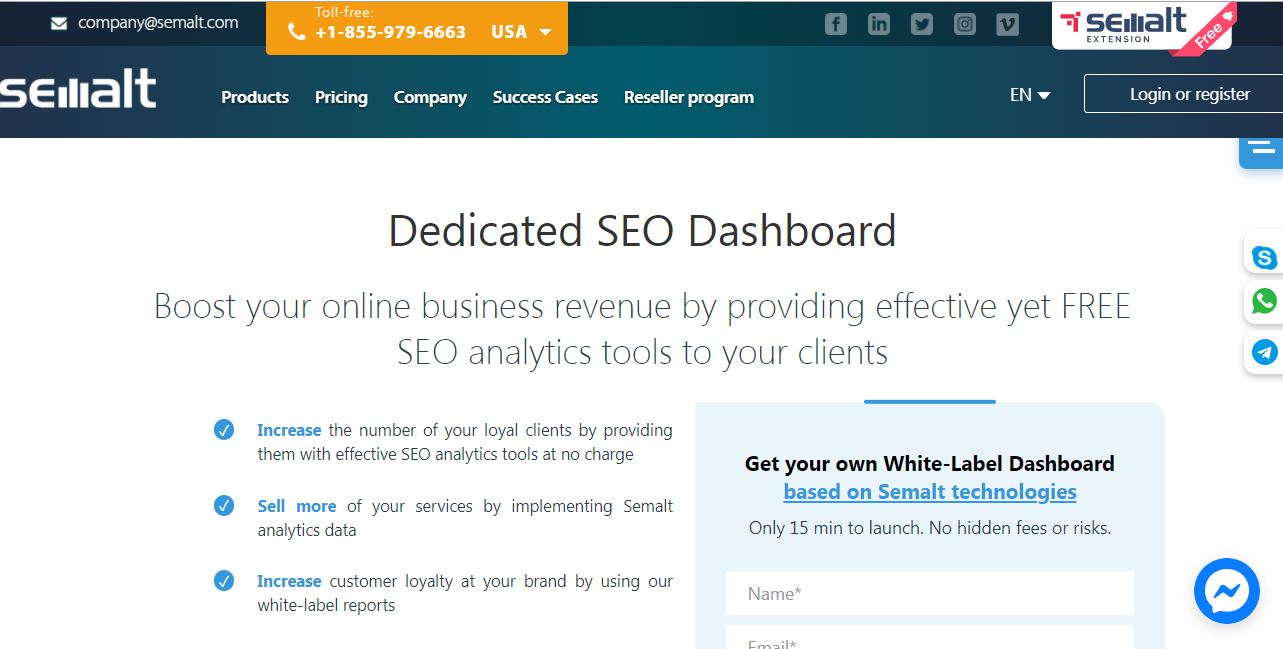Why Is SXO Effective? Semalt Knows The Answer!

Concepts such as customer journey and user experience (UX) have been functioning in the world of online marketing for some time. Marketers and advertisers understand more and more that the essence of all marketing as such is the focus on the customer/user and his / her needs. And it was from this way of thinking that the SXO approach, i.e. Search Experience Optimization, was created. What should one know about this strategy? Why is it effective? And how to implement it? We invite you to read!
If we wanted to create a short definition of SXO, it should be written that it is a combination of traditional activities optimizing websites in terms of search engines (SEO) and user experience, i.e. UX. The goal is one - to attract the customer's attention and encourage him/her to buy. Why is the SXO approach effective? Because it responds to the needs of customers.
Traditional SEO
The main goal of traditionally understood SEO activities is to achieve the highest possible position in the search engine, most often in Google. To this end, SEO agencies use several activities to make it possible:
- Link building: i.e. building as many valuable links to and from a given website as possible.
- Content marketing: in short, creating high-quality articles, entries, and other texts, with the purpose of showing Google bots that the positioned page contains unique, valuable content (ergo, it is worth presenting it to users). Optimization activities are aimed at showing Google bots what content can be found on the website. For this purpose, phrases and keywords are used, as well as an appropriate Google-friendly text structure (including headings H1-H4). It is also important to update the content on the website regularly.
- A refined mobile website: In September 2020 (later it turned out that Google extended the time to March 2021), Google introduced a new policy according to which the mobile version (and not the desktop version, as has been the case so far), is indexed by the bots of this search engine. In line with the new assumptions, the mobile version plays the first fiddle in the SEO strategy. Research indicates that as many as 85% of respondents believe that the mobile version should be at least of the same quality as the desktop version, or even better.
All these activities are carried out primarily with indexing bots in mind. However, such thinking turned out to be deceptive for many companies. Some players used actions that were not appreciated by either Google or customers. It is worth mentioning here, for example, keyword stuffing, i.e. unnaturally intensive placement of keywords and phrases on a page.
However, this is where the legitimate question arises - where is the user in all this? After all, it is the user who browses the website / online store and it is the user who places the order. Perhaps we should therefore concentrate on him/her? This brings us to the second key element that makes up SXO.
Why is SXO effective?
Whole books are written about UX, but here we have to limit ourselves to the very essence. UX, or User Experience, is the overall impressions and experiences of users that appear when contacting your company. Broadly understood UX covers all the key elements of modern business, which are:
- Webpage
- Customer service and available communication channels
- Profiles in social media
- Price and complaint policy
- Scope of the offer
The slightly narrowed concept of UX mainly refers to the website/online store and the mobile application. And it is this narrow understanding of UX that interests us mainly in the context of SXO. In the section devoted to traditional SEO, we talked about such elements as the:
- mobile version of your website;
- content marketing;
- optimization activities.
And in fact, each of these elements can be implemented with the user's needs in mind, and therefore in accordance with the SXO approach. How? Read on to better understand!
SXO in practice
SXO is the implementation of positioning and optimization activities in such a way as to also take into account the needs of customers and encourage them to buy. And at this point, the SXO issue becomes closely related to the customer's purchasing path, i.e. the customer journey. We will use the SEE-THINK-DO-CARE model to further analyze this issue.
See-Think-Do-Care Model
Avinash Kaushik, the author of this model, has been working in the digital marketing department of Google since 2007. In 2015, he proposed the SEE-THINK-DO-CARE model, which perfectly fits the SXO strategy. This model will match the content and elements on your website to customers at every stage of the shopping path. This approach divides customers into four main groups, depending on what stage of the customer journey they are at. And yes:
- See: is the widest group of recipients. Often these customers have not yet made any purchasing decisions. They are looking for information, they wonder. For example, if you run a bicycle shop, there will be customers in the SEE group who have made the decision to move more.
- Think: customers in this group already know more or less what they need. They are looking for more information and details. They often ask "how?": "How to start moving more?", "How to choose skis?", "How to choose a gaming laptop?".
- Do: This is the most important stage. At this stage, the client is practically ready to purchase a specific solution or product. He or she just needs a little incentive to act (preferably here and now).
- Care: These are customers who have already made a purchase but may come back, or are looking for more information.
Activities in line with the SXO strategy should focus on the needs of customers in each of these four groups. This is also a great recipe for saturating your website with various types of materials and content that will attract the attention of both customers and Google.
How to manage customers at each stage?
To interest customers at the SEE stage, show inspiration, answer general questions, present various possibilities. A social media profile will be useful for this purpose, especially on Facebook and Instagram.
The THINK client asks "how?", So focus on how-to in your content, rankings, summaries, and reviews.
When you get to the DO stage, well-thought-out CTAs, i.e. calls to action, a well-tailored offer, tutorials, and technical specifications are key. A discount on your first purchase or free shipping can work wonders.
The CARE stage is again advisory content, but it is more related to the care, maintenance, update, or maintenance of the product in general. A well-thought-out newsletter or a loyal customer club will work well here.
Key Words and Phrases
Earlier, we mentioned the unworthy use of a keyword stuffing strategy. The truth is, the opposite is the more effective. Of course, your website should contain keywords and phrases, but their distribution should be natural for the reader and appropriate to the context. The key phrases should not look "pushed in", as is often the case with the already legendary phrases such as "cheap hairdresser for women New York".
Read the content aloud after optimizing key phrases. If it sounds natural, similar to everyday communication - you're on the right track!
Link Building

The essence of effective link building lies in high-quality places where your links appear. Make them intuitive from the user's point of view. Coming back to our example of a bicycle shop - natural link building sites in this case are sites devoted to outdoor activities, sports, dietetics, health, and even tourism.
69% of marketers believe that buying links has a positive effect on search rankings.
Content Marketing

For over 50% of respondents, creating content that attracts customers is the biggest challenge related to content marketing.
The advice here is very simple: Whatever you write, write with your users and customers in mind. Think about what information your potential customers are looking for (use the Kaushika model for this purpose) and provide them with high-quality, correct, and unique entries and articles.
Also, write in a Google-friendly way:
- Use headings H1-H4
- Make sure you have a specific title, lead, and meta description
- Fill your text with keywords, but don't overdo that
- Make sure the article is linguistically correct
Are you wondering what to write about? Here is a tool to help you find text ideas for your website:
The Dedicated SEO Dashboard
The Dedicated SEO Dashboard is a tool developed by Semalt experts to search any market in the Google search engine. Its main advantage is the monitoring of about 20 million keywords, which are checked weekly and some even daily. It can be said that the Dedicated SEO Dashboard monitors most of the sites on Google. This tool can provide you with a lot of data that can be used when selecting keywords.
The biggest advantage of this tool is that it allows you to identify the main competitors in the right niche, their keywords that attract traffic and to understand their promotion strategy.
The Dedicated SEO Dashboard tool is not free, but you have a 14-day free trial period. This period will allow you to appreciate the performance of this tool before making a financial commitment.

So, feel free to dive into these data-driven tool features at demo.semalt.com
Facebook Groups

It is often a real mine of interesting topics. They are very popular and often cover even narrow issues. There you will find a lot of questions, doubts and discussions, many of which are worth transferring to your blog. Membership in such a group is also an automatic opportunity to easily promote such content. You should always check the regulations, but in general, no one should be angry with pasting a link to a valuable article.
Perfect SXO strategy?
Of course, this strategy will be slightly different for each website and store, but the key is to:
- Take care of the structure and content on the website in accordance with Google's guidelines. This also applies to the mobile version.
- Plan the shopping path to meet the needs of customers at all stages of such a path. The purchasing process itself should be as simple as possible so that nothing distracts the customer.
- Create new materials with the needs of customers in mind. Write texts that answer their questions and concerns. Be a trustworthy advisor, educate and inform about the news. Your customers will appreciate this approach.
- Encourage the purchase using various types of available methods and tools (SM profiles, newsletter, loyalty program, well-thought-out offer, effective CTA, intuitive navigation on the website, various communication channels).
- Take care of customers who have already bought something once and encourage them to come back.
Conclusion! Why is SXO effective?
After reading this post, you should largely know the answer to this question. SXO lets you kill two birds with one stone. On the one hand, positioning still plays an important role, and on the other - your marketing and communication are geared to the needs of customers, so they do not feel left out or unimportant. You could say that you win on both fronts this way. That is why we are convinced that soon the SXO approach will be standard because this is what the market expects.
Interested in SEO? Check out our other articles on the Semalt blog.